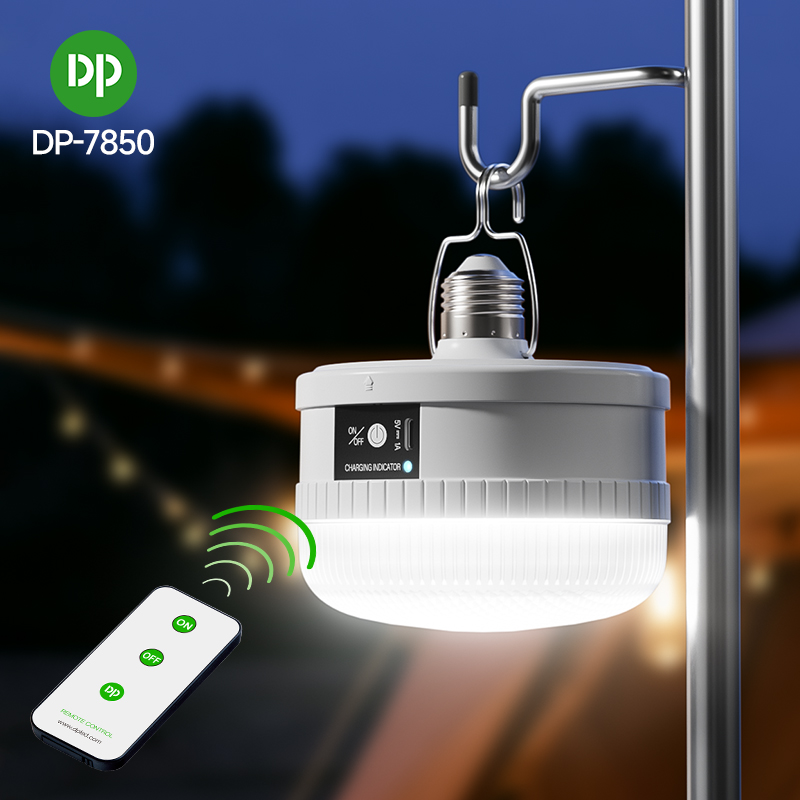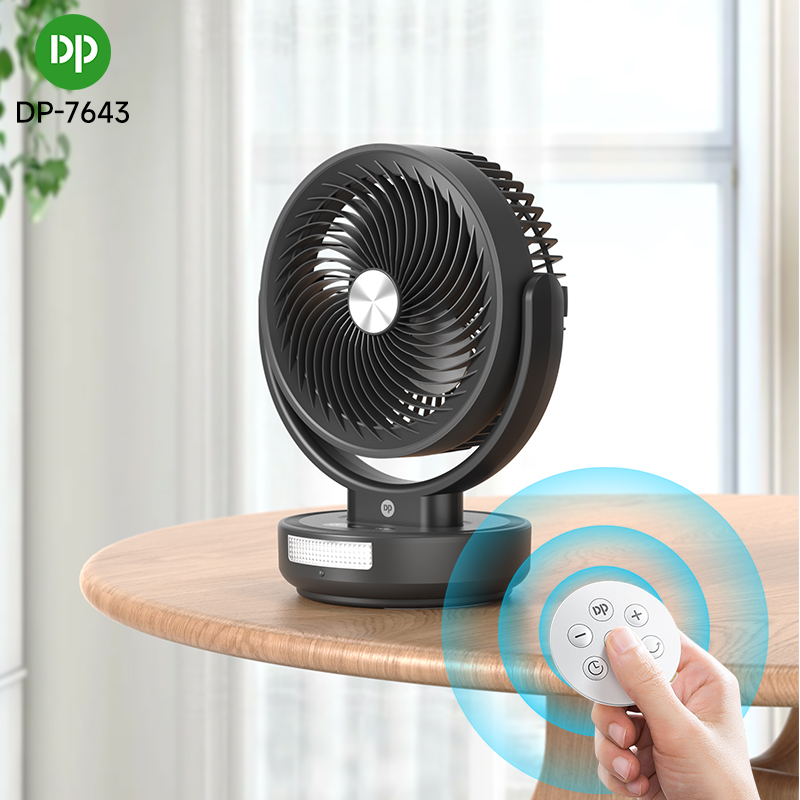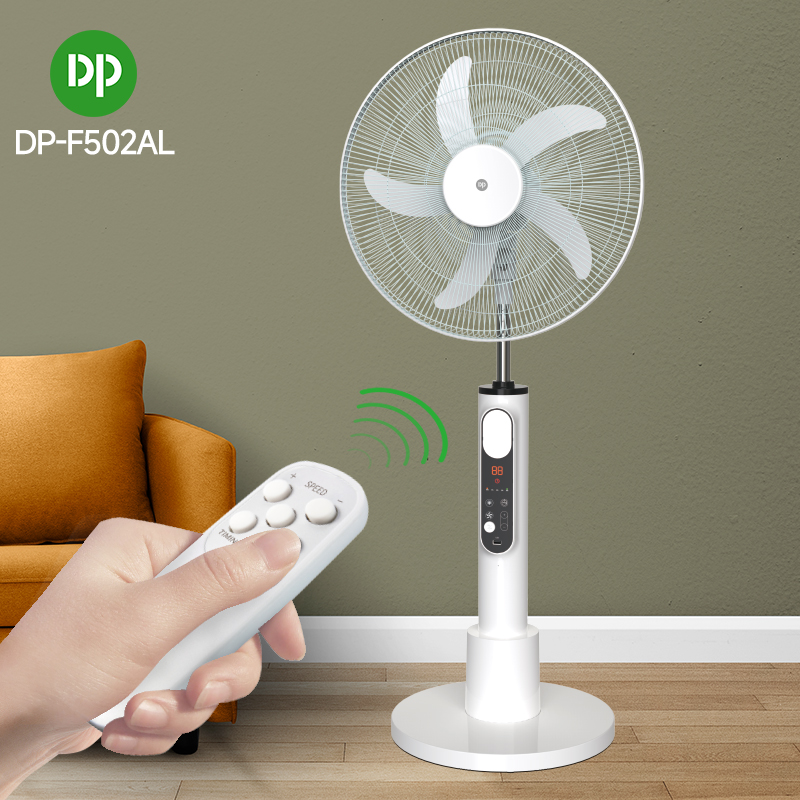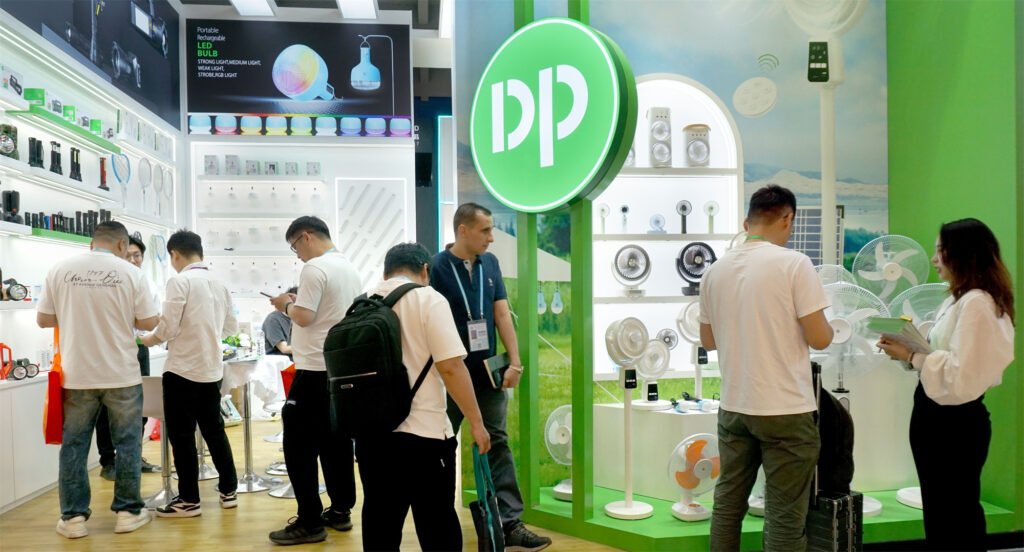Did you ever wonder how a tiny device in your hand can command lights to switch on, fans to spin, or TVs to play your favorite shows? Remote controllers are like invisible conductors in our daily lives—silently orchestrating gadgets with a press of a button. In this deep dive, we’ll unravel the magic behind remote controls, explore their design, and see how DP-Light harnesses this tech in products like the and
DP-F502AL Rechargeable Fan. Buckle up; it’s time to decode the unsung hero of modern convenience!
How Do Remote Controllers Work?
Infrared (IR) vs. Radio Frequency (RF) Technology
Remote controls primarily use two communication methods: infrared (IR) and radio frequency (RF).
IR Remotes (like your TV’s clicker) send pulses of invisible light to a receiver. Think of it as a secret flashlight morse code—effective but limited to lineofsight. Want proof? Try covering your TV remote’s LED with your hand; nothing happens!
RF Remotes, on the other hand, use radio waves. These can penetrate walls, making them ideal for devices like the DP-7643 Rechargeable Fan, which you can control from another room.
The Role of Signal Encoding and Decoding
Every button press sends a unique binary code. For example, pressing “ON” on the DP-7850 Emergency Bulb’s remote transmits a signal like `01001101`, which the bulb’s receiver decodes to trigger the circuit. Modern devices use advanced encryption to avoid “signal hijacking” from neighboring remotes.
Anatomy of a Remote Control
Key Components: Transmitters, Receivers, and Circuits
Transmitter: Usually an IR LED or RF module that emits signals (picture a mini lighthouse).
Receiver: A photodiode in IR devices or an antenna in RF systems that catches incoming signals.
Microcontroller: The brain that translates your button presses into codes.
Fun fact: The DP-F502AL Fan’s remote includes a magnetized back, so you can stick it to your fridge and never lose it—a tiny but genius design detail!
Power Sources and Sustainability Considerations
Most remotes rely on disposable batteries (AA/AAA), but DP-Light prioritizes efficiency. For instance, their fan remotes use longlasting coin cells (CR2032), reducing waste.
Remote Control Applications in DP-Light Products
Case Study 1: DP-7850 LED Emergency Bulb with Remote
Emergency Lighting: During power outages, use the remote to activate emergency mode instantly.
Energy Efficiency: Adjust brightness remotely to cut energy use by up to 70%, as shown in a 2023 study on smart lighting.
Multi-Speed Adjustments: Switch from a gentle breeze to turbo mode without leaving your couch.
Timer Functionality: Set the fan to auto-off after 2 hours—no more waking up to a chilly room!
Benefits of Remote-Enabled Devices in Daily Life
Accessibility for Elderly or Mobility-Limited Users
Remote controls eliminate the need to reach for wall switches or bend down. A study in IEEE Access highlights how assistive tech reduces fall risks by 40% in seniors.
Energy Savings and Smart Automation
Pair remotes with programmable schedules (e.g., turning off lights at midnight) to slash electricity bills.
Common Challenges and Troubleshooting
Signal Interference and Range Limitations
Thick walls or other RF devices (like WiFi routers) can disrupt signals. Solution? Keep the DP-7643 Fan’s remote within 10 meters for optimal performance.
Battery Replacement and Maintenance Tips
Replace batteries when response times lag.
Clean the remote’s contacts with rubbing alcohol to prevent sticky buttons.
Future Trends in Remote Control Engineering
Expect voicecontrolled remotes (Alexa integration) and solarpowered designs. DP-Light is already prototyping a selfcharging remote using ambient light!
Final Thoughts: Why Remote Controls Still Matter
In a world obsessed with touchscreens, remotes offer simplicity and reliability. Whether it’s managing emergencies with the DP-7850 Bulb or staying cool with the DP-F502AL Fan, these tiny devices make life smoother—one click at a time.
North America, South America, Eastern Europe, Southeast Asia, Africa, Mid East, Eastern Asia, Northern Europe, South Asia, and so on.


















